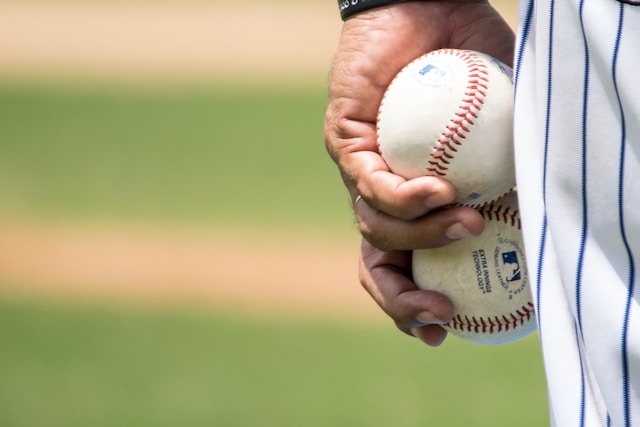Baseball is a game filled with oddities. The uniqueness of the game has spread its popularity all over the world. While the basic premise of baseball is simple enough–hit a ball, go around the bases, score without being ruled out by the opposing team–there are a lot of interesting and potentially confusing rules under the surface.
Imagine you’re watching a game. It’s in the late innings of a tie game, the bases are loaded, the defence has recorded two outs, the pitcher has two strikes on the batter, and he’s about to throw an important pitch. He starts his pitching motion, then stutters a bit before resetting. The umpire points to the pitcher, then points to the runner at third base, then to home plate. The runner scores.
What just happened?
The pitcher just committed an illegal action called a balk.
What constitutes a balk?
Major League Baseball’s Official Baseball Rules define a balk as follows: “A balk occurs when a pitcher makes an illegal motion on the mound that the umpire deems to be deceitful to the runner(s).” But what does that mean? What constitutes an “illegal motion on the mound”?
A pitcher is only allowed to move his body to do three things: deliver a pitch, step off the rubber, and pick off to a base. If he performs an action that the umpire deems not a legal part of these three motions, the umpire can call a balk, moving any runners on base forward. If the pitch is thrown, it results in a dead ball.
Depending on the situation, a balk can be extremely advantageous to the hitting team. In a situation like the example above, a balk could result in the game-winning run being scored by the hitting team. Obviously, a pitcher is never trying to balk. There are numerous ways a pitcher can commit this illegal action. Let’s look at some of the most common ways a balk can occur.
Flinching
Probably the most common reason for a balk to occur is also probably the simplest: the pitcher flinched. For example, if a pitcher is set on the mound and the runner at first steals second, causing the pitcher to flinch, this is a balk. A Major League Baseball pitcher has to be mentally tough and keep his body relaxed to prevent balks. But even the most cool, calm, and collected pitcher can get distracted and accidentally flinch.
Fake pick offs
Pitchers can attempt to “pick off” a runner, that is, throw to a base, most commonly first base, to catch a runner. There are rules that govern how to do this. If the pitcher keeps a foot on the rubber when making a pick-off move, he must throw to the base. Otherwise, it is a balk.
If the pitcher steps off the rubber first, it’s completely fine to fake a throw because it’s technically no longer a pick-off move. At that point, he operates the same as any other fielder and can throw the ball wherever he likes.
Illegal pick-off moves
While a pitcher is on the rubber, he cannot throw to a base without first stepping toward that base. This is more common for left-handed pitchers than right-handed pitchers. Because of the way a lefty pitcher may set up with a runner on first base, they could throw to first without taking a step, which is illegal. They must first take a step towards first base. The umpire determines what is a legal step in this instance.
Dropping the ball
If a pitcher drops the ball while standing on the rubber, it’s a balk. When this happens, it’s obviously an accident, but it’s against the rules. Sometimes a pitcher just might not have a good enough grip on the ball. If he drops the ball while off the rubber, it’s a live ball, and he should pick it up quickly before a runner can advance.
Conclusion
There are many other ways a pitcher can commit a balk. Some are up to the umpire’s interpretation, and it can be confusing to catch them all. The important thing to know is that a pitcher can’t deviate from delivering a pitch, stepping off the rubber, or picking off to a base. If they do, it’s a balk.






